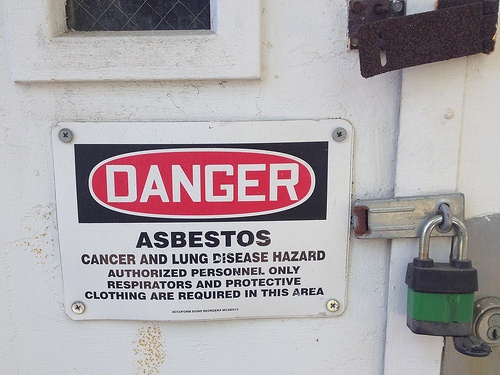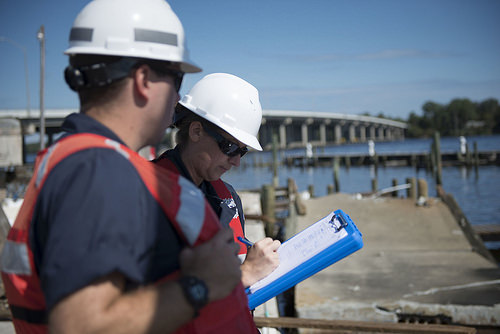If you’re contemplating significant changes at a facility that’s regulated as a “major source” under the Clean Air Act (CAA), you’d better figure out whether those changes will “modify” the source enough to trigger significant pre-construction review and permitting by the US Environmental Protection Agency (EPA) or its state or local delegee. The likely answer to questions like yours has changed with CAA amendments and regulations over the decades. EPA has just changed them again, after ending a decade long year delay of a regulatory “interpretation” published in the last week of George W. Bush’s presidency, and stayed by the Obama-era EPA throughout his presidency, and now reaffirmed and activated by the Trump-era EPA.
Read MoreAudit, Compliance and Risk Blog
EPA Will Aggregate “Substantially Related” Activities When Considering “Project” Thresholds For Pre-Construction Permit Review
Posted by Jon Elliott on Tue, Jan 15, 2019
Tags: Business & Legal, Health & Safety, Environmental risks, Environmental, EPA
EPA Proposes To Replace Obama-Era Rules For Coal Fired Power Plants
Posted by Jon Elliott on Tue, Oct 16, 2018
The Trump-era Environmental Protection Agency (EPA) has proposed to repeal and replace another of the Obama-era EPA’s signature efforts to reduce greenhouse gas (GHG) emissions. EPA has now proposed an “Affordable Clean Energy Rule”, to replace the “Clean Energy Plan” adopted in 2015 but stayed by litigation. The new rule softens the mandates in the earlier rule, and offers states more flexibility to design their own efforts to control greenhouse gas (GHG) emissions from existing fossil fuel-fired electricity generating units (EGUs) by eliminating Clean Power Plan requirements that states consider operational changes “outside the fenceline” of the regulated EGUs.
Read MoreTags: Environmental risks, Environmental, EPA, Greenhouse Gas, ghg
Court Reinstates Delayed Accidental Release Prevention Revisions, While EPA Moves To Rescind Them
Posted by Jon Elliott on Tue, Oct 09, 2018
What’s the Current Status of ARP Requirements?
ARP rules specify “regulated substances” and threshold quantities for which onsite incidents could produce harmful offsite consequences, “risk management plan (RMP)” requirements to be instituted by facilities in order to manage those risks, and associated procedural and reporting requirements. In the last week before President Obama left office, EPA completed a multi-year review of its ARP program, responding to his Executive Order Number 13650 from 2013 (I wrote about these revisions here). Then, when President Trump took office, EPA reversed course, repeatedly deferring the effective date of those revisions while the agency reviewed them. In June 2017 EPA issued the latest of these deferrals, citing pending petitions for review by industry groups, and the agency’s need to reconsider the matter to justify deferring the effective date of the (Obama era) revisions for 20 months.In May 2018 EPA completed its review, and published a proposal in the Federal Register to rescind almost all these expansions and return ARP requirement to those in place before 2017 (I summarized the proposal here). EPA also included an alternative proposal that retained a few more elements, and requested public comment on both versions no later than July 30, 2018.
What Has the DC Circuit Just Decided?
The DC Circuit case was brought by environmental and health groups, supported by a number of state governments. They claimed that EPA’s 20 month deferral exceeded the three month limit provided the agency by the CAA. They also noted that the agency had offered no substantial justification for overturning a final decision (the January 2017 revisions) after a multi-year rulemaking.The case was heard by a 3 judge panel of the DC Circuit (interestingly, the panel include Judge Brett Kavanaugh, whose nomination to the US Supreme Court is pending and who took no part in this decision). The remaining judges agreed with the plaintiff’s arguments, found EPA’s delay to be “arbitrary and capricious”, and vacated the deferral rule.
Now What?
With the deferrals gone, the 2017 revisions take effect as issued in the waning days of the Obama administration. After the first two Trump Administration deferrals, the revisions would have been effective in June 2017 with staggered compliance deadlines. Facilities were to ensure coordination of their onsite activities with offsite response agencies by March 2018, institute enhanced RMP activities by March 2021, and formally revise their RMPs by March 2022. On September 21, the Court issued another order directing EPA to begin enforcing the 2017 rules immediately. This means that the coordination requirements identified above are active, and other elements remain on their original phase-in schedule..But EPA’s May 2018 proposal to rescind most of the January 2017 amendments was not part of this case, and so is unaffected. As of this writing EPA has not made any statement about further appeal of the August 2018 court decision, but it’s safe to assume that the agency is proceeding with its own May 2018 proposal – presumably paying attention to the procedural flaws highlighted in the court order. I expect EPA will eventually issue some version of its proposed regulatory roll-back, which will trigger further litigation about whether the dramatic change is justified by the rulemaking record.
Self-Assessment Checklist
Does the organization own or operate any facility with any “stationary source” subject to ARP requirements?
-
If so, has the organization considered the impacts on its operations and compliance position under potential revisions?
Where Can I Go For More Information?
Read MoreTags: Environmental risks, Environmental, EPA, clean water
On April 19, 2018, EPA released their Environmental Justice FY2017 Progress Report. The report commemorates the 25th anniversary of the Office of Environmental Justice (EJ), highlighting progress advancing EJ in minority, low-income, tribal, and indigenous communities. Among their 2017 successes, EPA documented for the first time measurable environmental outcomes in three program areas: fine particulate air pollution (PM2.5), small drinking water systems, and tribal drinking water systems. In each area, EPA measured significant improvements:
Read MoreTags: Environmental risks, Environmental, EPA, clean water, site auditing
EPA is Considering a Regulatory Roadmap For Additional Uses of Asbestos
Posted by Jon Elliott on Tue, Oct 02, 2018
The Environmental Protection Agency (EPA) is expanding its attention to asbestos and its associated hazards, including both existing uses and possible new uses. EPA is undertaking these initiatives under the aegis of extension of its authority under the Toxic Substances Control Act (TSCA), enacted in 2016 Amendments to TSCA -- the “Frank R. Lautenberg Chemical Safety for the 21st Century Act.” (I wrote about provisions relating to existing chemical here, and for new chemicals and new formulations of existing chemicals here).
Read MoreTags: Environmental risks, Environmental, EPA, Hazcom, tsca
OSHA Provides Planning and Response Advice Addressing Hurricanes
Posted by Jon Elliott on Tue, Sep 25, 2018
Federal agencies have marked the beginning of Atlantic hurricane season by reminding employers and the public of the risks from hurricanes, and how to plan for and respond to events. These include a compilation of advisory documents on the Occupational Safety and Health Administration (OSHA) website, which also includes links to additional information by the Federal Emergency Management Agency (FEMA), Centers for Disease Control and Prevention (CDC), and the National Hurricane Center. This information is too late to help people in the Carolinas who’ve been inundated by Florence, but does provide useful reminders.
Read MoreTags: OSHA, Environmental risks, Environmental, EPA
Circuit Court Ends a Decade of Delay by Ordering EPA to Cancel a Hazardous Pesticide
Posted by Jon Elliott on Tue, Sep 18, 2018
The Federal Insecticide, Fungicide and Rodenticide Act (FIFRA) empowers the Environmental Protection Agency (EPA) to define and regulate pesticides meeting statutory qualifications, providing extensive procedural directions how to do so. In addition, the Federal Food, Drug, and Cosmetic Act (“FFDCA”) authorizes EPA to regulate the use of pesticides on foods according to specific statutory standards, and grants EPA limited authority to establish tolerances for pesticide residuals on foods. These directions govern EPA’s analyses of applications for registration, ongoing evaluations of evolving scientific understanding and practical experience with pesticides that have been registered, and response to public comments and petitions (I provided a basic summary of FIFRA registration procedures here).
Read MoreTags: Health & Safety, Environmental risks, Environmental, EPA, Hazcom
UST Compliance: Are You Ready For The October 2018 Requirements?
Posted by Specialty Technical Consultants on Thu, Aug 30, 2018
 Kathy McKinney-Tovar, STC Senior Analyst
Kathy McKinney-Tovar, STC Senior Analyst On July 15, 2015 (80 FR 41566), EPA published the first major revision to the federal underground storage tank (UST) regulations since 1988. The 1988 UST regulation required owners and operators to have spill, overfill, and release detection equipment in place; the 2015 amendments add additional requirements to ensure that this equipment is functioning properly and is adequately maintained to effectively prevent a release. Table 1 below summarizes the operation and maintenance provisions that apply October 13, 2018.
In addition to imposing new operation and maintenance requirements, the 2015 amendments address UST systems deferred in the 1988 UST regulation. USTs storing fuel for use by emergency power generators have their deferral removed, with EPA adding requirements for release detection by October 13, 2018. Airport hydrant systems (AHS) and UST systems with field-constructed tanks (FCT) lose their deferral status and must also comply with Subpart K by October 13, 2018 (see Table 1 below). Previously EPA removed the deferral for wastewater treatment tanks, USTs containing radioactive material, and emergency generator UST systems at nuclear power generation facilities and reclassified them under a new category, “partially excluded UST systems.” Owners and operators of these tanks must continue to comply with Subparts A and F as they always have, as well as new installation requirements.
The 2015 amendments also include provisions for operator training (as outlined in Table 1). The majority of states, however, adopted requirements regarding operator training under the UST grant guidelines of the Energy Policy Act of 2005 (Act). The UST provisions of the Act focus on preventing releases and expand eligible uses of the Leaking Underground Storage Tank (LUST) Trust Fund. States that receive grants to help pay for the cleanup of leaking UST sites had to meet the requirements or lose funding. Since nearly all states receive funding to help pay for cleanup, the vast majority previously adopted requirements regarding operator training following the Act’s grant guidelines. EPA is allowing these states to retain their regulations, although some states have chosen to make changes to more closely align with the 2015 amendments.
Compliance with the 2015 amendments depends on whether a state has state-plan approval (SPA). Currently, 38 states and territories have received SPA to operate their UST programs in lieu of EPA’s requirements. Facilities in these states are not required to comply with the 2015 amendments until the state revises its regulations. Owners and operators in the 12 non-SPA states (AK, AZ, CA, FL, IL, KY, MI, NJ, NY, OH, WI, and WY) and 4 territories need to follow their state or territory requirements as well as meeting the EPA’s amendments according to the time frames listed in Table 1.
As of July 6, 2018, 21 states (17 SPA states and four non-SPA states) have either published state-specific regulations that adopt the 2015 amendments or have incorporated by reference the federal regulations. A summary of these state programs and their adoptions status can be found on the Resources page of the STC website.
Table 1 – Summary of the 2015 UST Amendments
| New Requirement | Implementation Time Frame |
| Designation and training of A, B, and C operations. | Owners and operators must begin meeting these requirements by October 13, 2018 |
| Release detection for UST systems storing fuel for use by emergency power generators. | |
| Subpart K applicability for AHSs and FCTs (release detection, upgrade, general operating requirements, and operator training requirements) | |
| Spill prevention equipment inspections every 3 years. | Owners and operators must conduct the first test or inspection by October 13, 2018 |
| Release detection equipment testing annually | |
| Monthly walkthrough inspections of spill prevention equipment and release detection equipment | |
| Annual walkthrough inspections of containment sumps and hand held release detection equipment. |
Specialty Technical Publishers (STP) provides a variety of single-law and multi-law services, intended to facilitate clients’ understanding of and compliance with requirements. These include:
Read MoreTags: Environmental risks, Environmental, EPA, UST
Federal Enforcement Falls in President Trump’s First Year
Posted by Jon Elliott on Tue, Aug 28, 2018
President Trump and his agency heads have been clear about their intent to reduce regulatory “burdens” on individuals and organizations. Meanwhile, however, they have tended to talk tough on crime. However, a new report shows that civil and criminal enforcement against corporations fell dramatically during their first year in office, compared with enforcement during President Obama’s term. In July, the nonprofit advocacy group Public Citizen published “Corporate Impunity – ‘on Crime’ Trump Is Weak on Corporate Crime and Wrongdoing.”
Read MoreTags: Business & Legal, Environmental risks, Environmental, EPA, corporate social responsibility
Feds Formally Propose to Roll Back Future Auto Emission Standards
Posted by Jon Elliott on Tue, Aug 21, 2018
 The Trump Administration has taken the next step toward rolling back automobile standards intended to reduce greenhouse gas (GHG) emissions. On August 2, the Environmental Protection Agency (EPA) and the National Highway Traffic Safety Administration (NHTSA) issued a joint proposal to replace emission standards previously adopted to tighten emission standards during model years 2021-2026, captioned the “Safer Affordable Fuel-Efficient (SAFE) Vehicles Rule for Model Years 2021-2026 Passenger Cars and Light Trucks.” The agencies present a formal proposal to extend existing emission standards through those years, but also seek comments on several variations on this proposal.
The Trump Administration has taken the next step toward rolling back automobile standards intended to reduce greenhouse gas (GHG) emissions. On August 2, the Environmental Protection Agency (EPA) and the National Highway Traffic Safety Administration (NHTSA) issued a joint proposal to replace emission standards previously adopted to tighten emission standards during model years 2021-2026, captioned the “Safer Affordable Fuel-Efficient (SAFE) Vehicles Rule for Model Years 2021-2026 Passenger Cars and Light Trucks.” The agencies present a formal proposal to extend existing emission standards through those years, but also seek comments on several variations on this proposal.
Tags: Environmental risks, Environmental, EHS, EPA, Greenhouse Gas, ghg, CAA, Transportation








